Frdric Le Bordays
Photographer : Virginie Garnier
Stylist : Coralie Ferreira


PREFACE
I met Frdric Le Bordays in Deauville, Lower Normandy. It was January of 2011, during a culinary festival. He proffered his services for cocktailsnonalcoholic ones. He had the look of a Prohibition-era New York bartender: custom-made shirt, retro black vest, old-school cap, and at least three days beard. At the time, I was arranging a photography show about the Parisian cocktail scene, and I was looking for new rising stars. Id heard about him: a very promising barman, at the very moment when a new era of French mixology was dawning in Paris.
A few months later, I found him again in order to take his portrait for a magazine. The article highlighted several tidbits from his recipe notebook and his passion for the world of vintage cocktails. I was still a booze neophyte, and that day, Frdric became my mentor. He was steeped in the history of the golden age of cocktails and in the stories of the greatest barmen, from Jerry Thomas to Harry Craddock. An artist of the cocktail shaker and the bar spoon, he displayed a special ability and finesse in sharing his keen appreciation for old-fashioned digestifs and the elixirs dreamt up in the most prestigious American bars of the nineteenth century. From the Moscow mule to the Manhattan, from the most divinely sweet to the bone-driest dry, I tell you this: Frdric had a true gift for electrifying the taste buds.
After exercising his talent in different Parisian hot spots, Frdric continued on his own path, guided by his passion, putting together Mixed Drinks, a pop-up event that specialized in revisiting mythic cocktails. Drinks of the highest order, with service to match, attentive to the tiniest detail. Frdric was one of the first French barmen to have the audacity and the foresight to bring vintage spirits and the great American tradition of classic cocktails back into stylean ambitious and daring gamble, faced as he was with a French audience that is more drawn to wine than to spirits. This volume is the perfect reflection of Frdrics expertise in cocktail lore, ranging from before Prohibition to our times, and of the richness of his experiments in mixology. I invite you to experience this book like a journey in time, and, of course, do not hesitate to test all of his recipes. Laurence Marot
Mixology Journalist  Recalling certain gentlemen of other days, who made drinking one of the pleasures of lifenot one of its evils ; and who, whatever they drank, proved able to carry it, keep their heads and remain gentlemen. Laurence Marot
Recalling certain gentlemen of other days, who made drinking one of the pleasures of lifenot one of its evils ; and who, whatever they drank, proved able to carry it, keep their heads and remain gentlemen. Laurence Marot
Mixology Journalist  Recalling certain gentlemen of other days, who made drinking one of the pleasures of lifenot one of its evils ; and who, whatever they drank, proved able to carry it, keep their heads and remain gentlemen.
Recalling certain gentlemen of other days, who made drinking one of the pleasures of lifenot one of its evils ; and who, whatever they drank, proved able to carry it, keep their heads and remain gentlemen.
These lines, taken from the famed cocktail book The Old Waldorf-Astoria Bar Book (1935), nicely illustrate the state of the modern cocktail mindset of the last few years: advocating a return to responsible consumption based on quality, not quantityin pursuit of sipping pleasure and not careless drunkenness. Like the world of gastronomy, the cocktail world is undergoing a little revolutionor, shall we say, a return to its origins. We are rediscovering the artisanship of the bar and the barmans trade, its expert techniques, and the richness of its heritage. My gratitude goes to those passionate individuals who resuscitated the first cocktail books, dating from the second half of the nineteenth century, which gave rise to the Manhattan, the whiskey sour, and the gin fizz. Its during that era, considered the golden age of the cocktail, that the foundations of modern mixology were established. No one can deny that cocktail culture profits from the current mania for all things vintage.
Nevertheless, it is rewarding to notice that this popularity goes hand in hand with a certain attention to quality and a demand for constant progress. Excellence is no longer measured by the awarding of five stars; cocktails are democratic, and everyone can discover the pleasure of tasting one created according to the rules of the art. This volume brings together a number of these forgotten cocktails, as well as historical information and techniques for creating them at home, but also more contemporary recipes that marry tradition with modernity. Happy tasting!
HISTORY
 A STIMULATING LIQUEUR
A STIMULATING LIQUEUR The origin of the word cocktail is uncertain, and one finds little documentation on the subject. Many theories have been put forward to explain the cocktails appearance. One tends to hear about a Creole apothecary, Antoine Amde Peychaud, who set himself up in New Orleans at the beginning of the nineteenth century and who concocted a blend of cognac, absinthe, sugar, and aromatic bitters that he sold under the name Peychauds Bitters.
He served this beverage, called Sazerac after the brand of cognac used, in an egg cupor, as it is called in French creole, a coquetier; the mangling of this word by nonCreole speakers gave birth to the word cocktail. As for the origin of many recipes, it is difficult to determine the paternity of a mixture andjust between you and menot very interesting. Whats more, it seems to me difficult or even delusional to claim that a certain fellow was the first to mix whiskey with lemon juice and sugar without someone else at the other end of the earth having done the same thing... For this reason, its important to take many claims and origin stories with a grain of salt and to concentrate on the written evidence. One of the earliest references to the word cocktail appears in the journal The Balance, and Columbian Repository dated May 6, 1806. Its interesting to note that the word cocktail has become the generic term for a mixture of drinks, while in the nineteenth century, it designated a very particular category of drinks, composed of a liquor, sugar, and aromatic bitters. 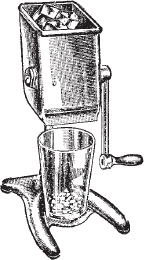 PUNCH, THE COCKTAIL ANCESTOR The history of the cocktail and its evolution are intimately tied to great political and cultural movements.
PUNCH, THE COCKTAIL ANCESTOR The history of the cocktail and its evolution are intimately tied to great political and cultural movements.  PUNCH, THE COCKTAIL ANCESTOR The history of the cocktail and its evolution are intimately tied to great political and cultural movements.
PUNCH, THE COCKTAIL ANCESTOR The history of the cocktail and its evolution are intimately tied to great political and cultural movements.
The British colonial empire certainly played a decisive role in the development of the cocktail in Europe and the United States, notably in its most popular form of the time: punch. The word punch resonates with the Hindi word panch, which means five, a reference to the number of ingredients: spirits, lemon juice, sugar, water, and tea or spice. This preparation, brought back from India to England by sailors working for the British East India Tea Company at the beginning of the seventeenth century, marks the birth of the cocktail as we know it today. It is prepared in nonreactive punch bowls, and generally includes brandy, rum, or gin. The advent of the gin & tonic, consumed to ward off malaria, also dates from this period. 


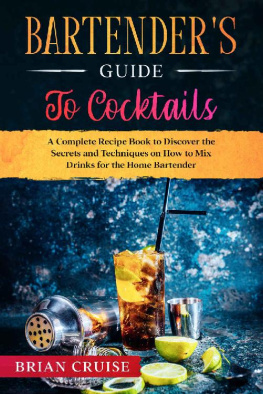
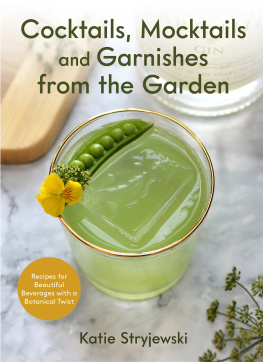
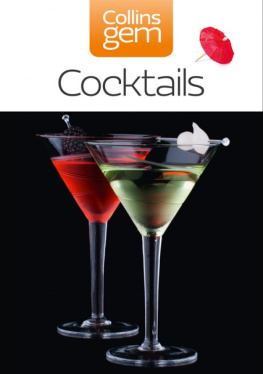

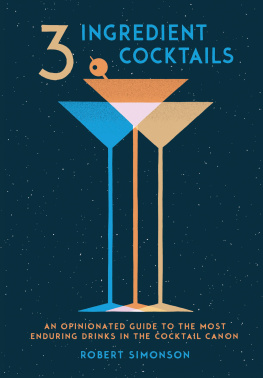

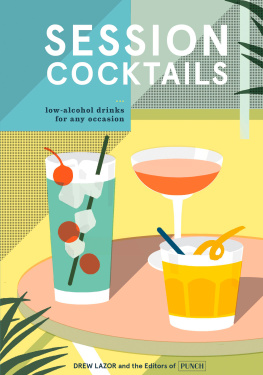
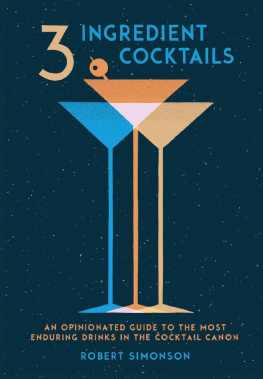
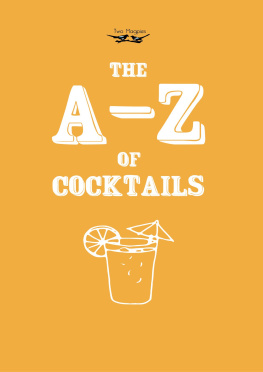
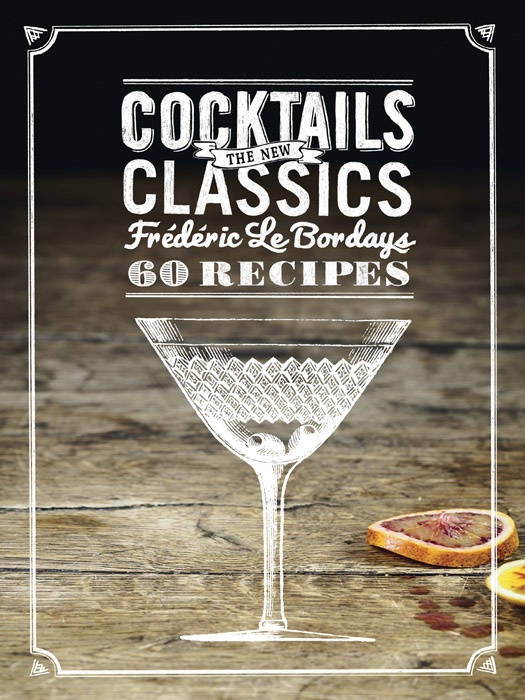
 Photographer : Virginie Garnier
Photographer : Virginie Garnier

 Recalling certain gentlemen of other days, who made drinking one of the pleasures of lifenot one of its evils ; and who, whatever they drank, proved able to carry it, keep their heads and remain gentlemen. Laurence Marot
Recalling certain gentlemen of other days, who made drinking one of the pleasures of lifenot one of its evils ; and who, whatever they drank, proved able to carry it, keep their heads and remain gentlemen. Laurence Marot A STIMULATING LIQUEUR The origin of the word cocktail is uncertain, and one finds little documentation on the subject. Many theories have been put forward to explain the cocktails appearance. One tends to hear about a Creole apothecary, Antoine Amde Peychaud, who set himself up in New Orleans at the beginning of the nineteenth century and who concocted a blend of cognac, absinthe, sugar, and aromatic bitters that he sold under the name Peychauds Bitters.
A STIMULATING LIQUEUR The origin of the word cocktail is uncertain, and one finds little documentation on the subject. Many theories have been put forward to explain the cocktails appearance. One tends to hear about a Creole apothecary, Antoine Amde Peychaud, who set himself up in New Orleans at the beginning of the nineteenth century and who concocted a blend of cognac, absinthe, sugar, and aromatic bitters that he sold under the name Peychauds Bitters.  PUNCH, THE COCKTAIL ANCESTOR The history of the cocktail and its evolution are intimately tied to great political and cultural movements.
PUNCH, THE COCKTAIL ANCESTOR The history of the cocktail and its evolution are intimately tied to great political and cultural movements. 